Maël Brunet and Julien Chaput itroducing the beginnings of the game.
May 16, 2024
Designer Diary #1: Ironwood
Hi gamers!
Maël Brunet and Julien Chaput here. Today we want to share some of Ironwood’s itinerary, design reasonings, and pay our debts to the games that influenced us.
We won’t go into detail about the basics and the story of the game – assuming you have read the introduction article to the game – but if you haven’t, go check it out first: https://bit.ly/4bBafTM

Maël: I started working on what would become Ironwood in the Summer of 2020. It was a very different game back then. For one, it was set in the Caribbean sea during the golden age of piracy! But some elements were already present from the start and survived the many iterations: it has always been an asymmetric, 2 player card-driven game. Around a year later, my friend Julien and I decided to join forces to continue developing the game. We both play a lot of Netrunner, which was one of the inspirations for this game, so the design ethos of this project naturally struck a chord with him (Julien’s also part of Null Signal Games’ design team). We kept the pirate theme, but drastically changed some other aspects of the game, particularly the shape of the board, the way we acquire cards and the combat system. Having a co-designer on board was invaluable: being able to quickly bounce ideas around, as well as keeping a regular schedule for testing sessions meant that the design was now progressing at a much faster pace than it had been in the previous year.
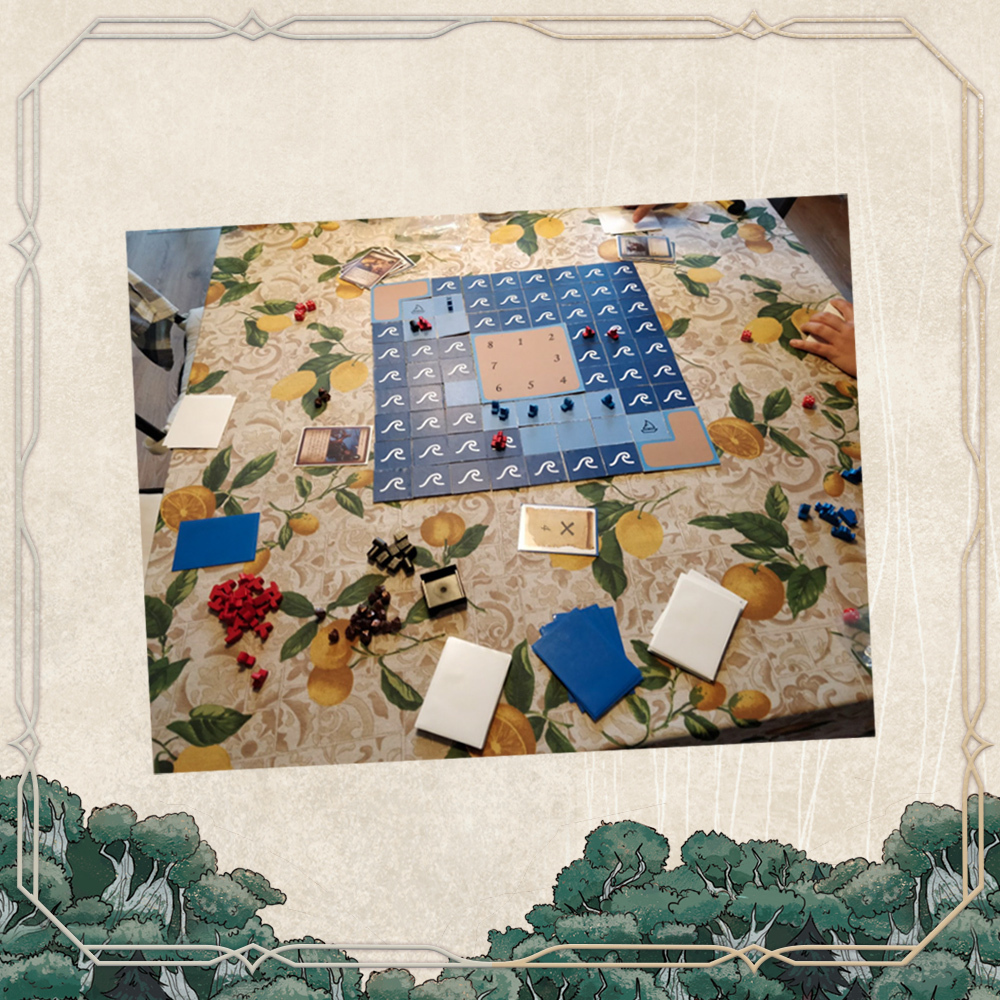
We started early on with a physical prototype, but having to update the board and cards every time we made any change was very time-consuming. So we made a version playable online, and iterated a lot on that. From time to time, though, we would still print all the updates and test in real life to make sure we weren’t missing anything from the physical experience. Having an online prototype also made it possible to test the game and get feedback from a wider audience, and ultimately also made it easier to demo the game to publishers. After over a year of iterations, we had a prototype that we were happy with.

Maël: Once all our playtests and feedback suggested we couldn’t really improve the game on our own, we felt ready to contact publishers and arrange meetings online and at Essen, in 2022. It’s always quite hard to have an objective view on your own work, especially while you’re so drowned into it. But after many meetings, and three publishers making us an offer, we knew we had something special. We were looking for a real partnership at this point: we weren’t in a hurry to get the game out and we wanted a publisher who was interested in making the game the best version of what it could possibly be. Mindclash Games was the obvious choice for us: even though the game was quite different from the rest of their catalog, they had a proven track record in spending the time and effort to make stellar games. Many publishers considered our game to be pretty much ready to print. But with MCG, we continued developing the design for a year, and we believe this reflects in the quality of the final version.
One big change that happened early on was the theme: the historical setting didn’t fit Mindclash’s brand and we both agreed that we wanted to distinguish Ironwood from a “traditional” wargame as this wasn’t really the vibe we were going for. A fantasy world also offered more creative freedom and visual originality. The Mindclash team came up with the setting of Ironwood, and after they showed us some sketches of what each clan would look like, we fell in love with it.
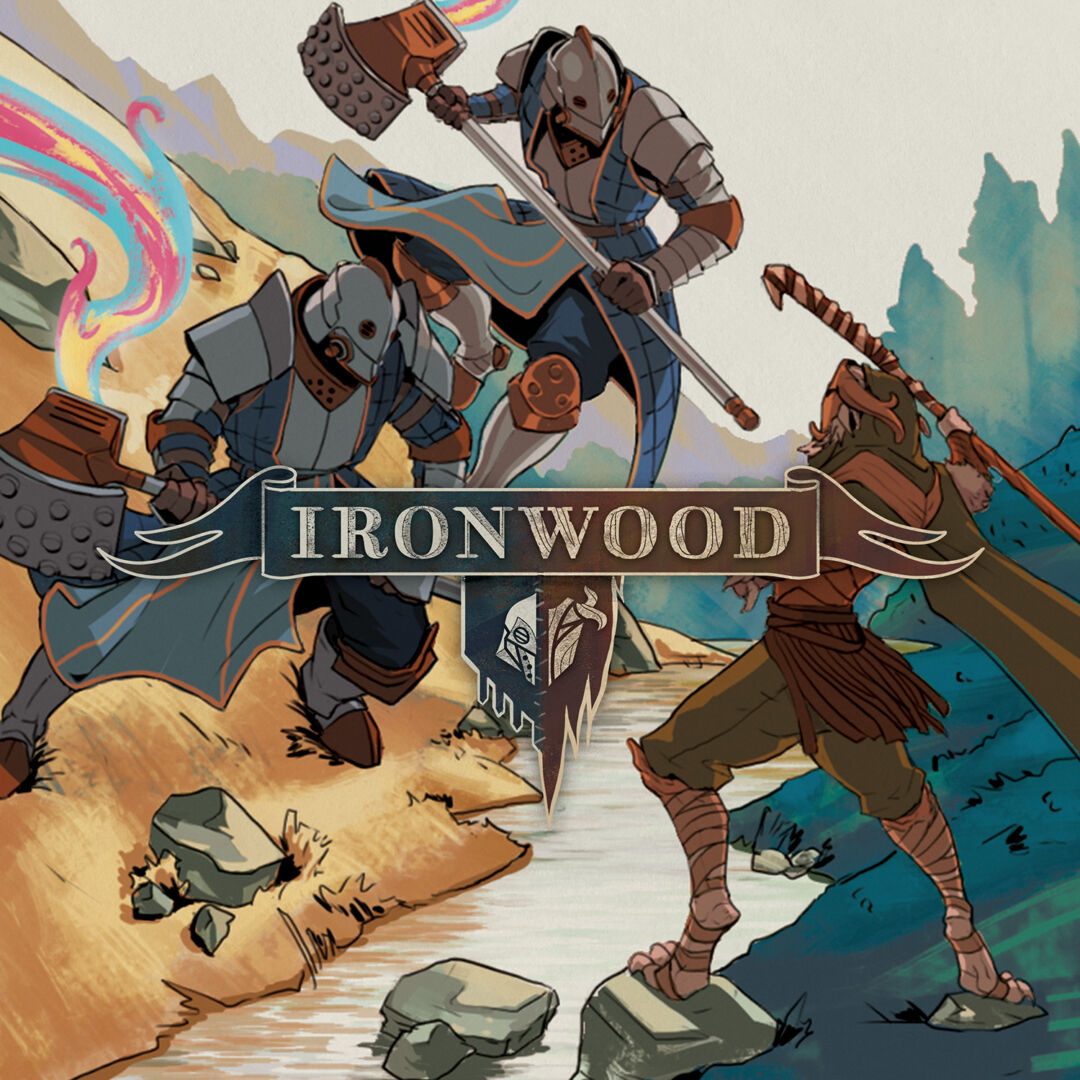
Of course, some of the improvements also came in the form of mechanical changes, after receiving feedback and ideas from different people who played the game. Once the design was more or less finalised, the Mindclash team put together a playtesting group which tested “Project Leaf” more intensively. This helped immensely in tweaking the balance, as well as making sure that every individual card effect was clear and interesting. We collected both unstructured and structured feedback from the playtesters (such as the winrate of each faction, which cards were perceived as particularly strong or weak, etc.), so that we had solid data to base our decisions on. We also took care to get feedback from different profiles of players. It’s easy to generate a selection bias when doing playtests, as the people most motivated to play multiple games tend to have similar tastes, and can create a form of groupthink. Their input is truly valuable for finding patterns, bonkers combos and making sure the replayability is huge. But getting a fresh perspective from newer players regularly was also important to us, as we wanted the game to be both deep and approachable.
On that end, we also specifically paid attention to the first game experience. After several attempts, we came up with a solution that wouldn’t change anything to the setup or rules and still, would make your first game feel like a breeze: curated decks. Instead of shuffling your faction specific deck, just draw cards based on their reference number (1, 2, 3, …). We’ve ordered them so that you will experience the less complicated card effects first and discover new ones round by round. This simple method has proved very smooth in playtest.

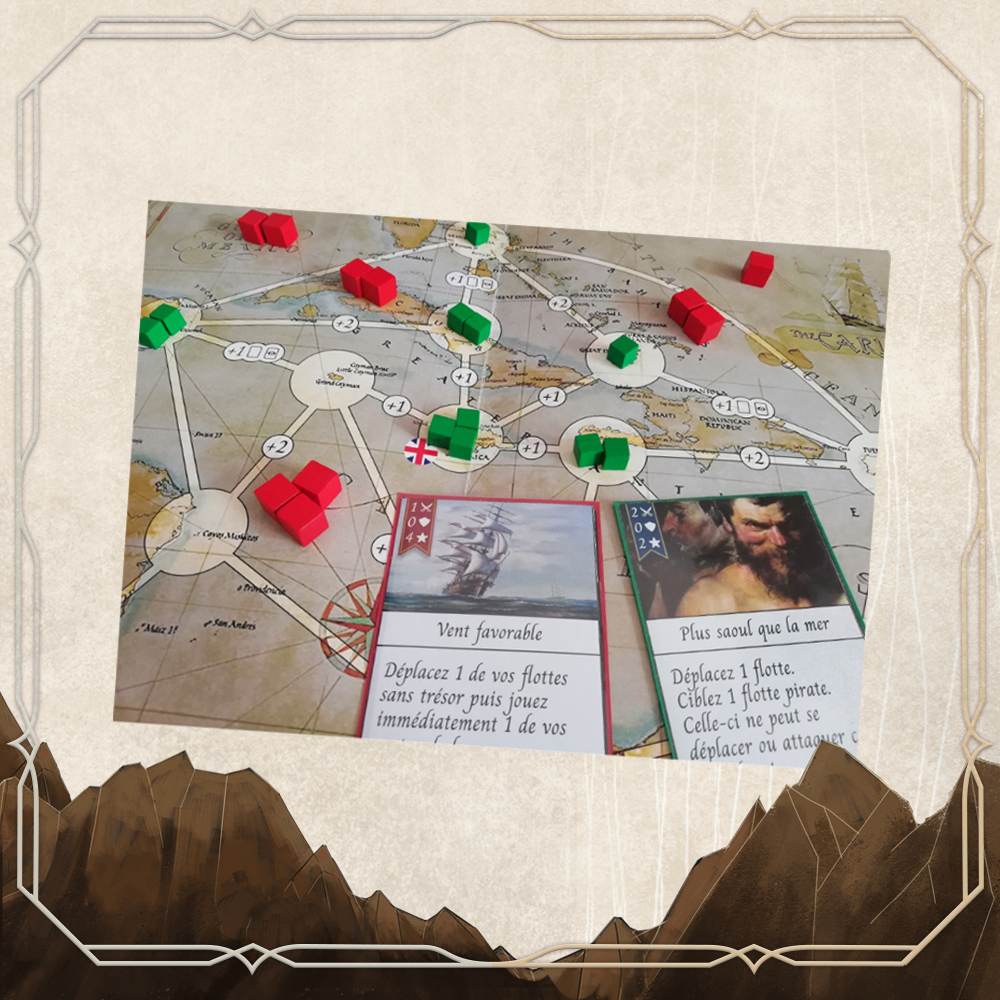
Julien: As you can see from the picture above, the change in setting seems quite big on the surface. But actually, not only did it stay true to our asymmetrical gameplay, it enriched it! From the beginning, we envisioned the British Empire (which later became the Ironclad) as an imposing conquering force, somewhat slow but steady, and the Pirates (which became the Woodwalkers) as a highly mobile, aggressive and unpredictable army. But revolving around ships, treasures and some historical references, sometimes felt restrictive. We definitely could explore spicier effects in a fantasy land.
As a result, both factions play and feel dramatically distinct. The Ironclad have quite a robust income. They represent the established, defensive faction that has the advantage by default, forcing the Woodwalkers to challenge them from early on. They also need a lot of crystals to build forges and win the game. But we doubled this economic advantage with their unique non-fighter piece: the drill. The drill is all about creating forks and interaction, in a sort of push-your-luck dialogue with the Woodwalkers player: the longer you wait, the more lucrative it gets, but you won’t cash in any of its crystals before it makes its way back to your forges! And the Woodwalkers always lurk close by… When will you choose safe drill itineraries? And when will you get greedy?
Compared to the Ironclad’s industry, the Woodwalkers produce fewer crystals each round. Their economy is focused on sabotage and looting. They need to be aggressive. To that end, they have a good deal of card effects launching battles, often with an extra bonus if they win.
Their playstyle is primarily focused on mobility and guerilla warfare: while the Ironclad armies only march together in order, all Woodwalker troops can move individually, threatening multiple fronts on the map. Then, all of a sudden, they can gather forces and attack a weak point in their enemies’ defense.
This ability to pick up their fights gives them an edge in this conflict. But the Ironclad know how to deal with their foes… Especially with a golem deployed! Golems are tough combat units that bring frightening damage into battle. And the same is true for forges. Woodwalkers will think twice before attacking the strongholds and metallic giants of the Ironclad.
Of course, each faction’s deck is central to creating their unique playstyles. But their game objectives and even their play zones on the board differentiate them too. Ironclad only stay on mountains and they need to build foundations then turn them into forges to win. Woodwalkers move across the forests in between. They have to locate ancient totems through their unique Vision cards, defeat Ironclad warbands on the revealed mountains, and finally carry these totems to a safe place.
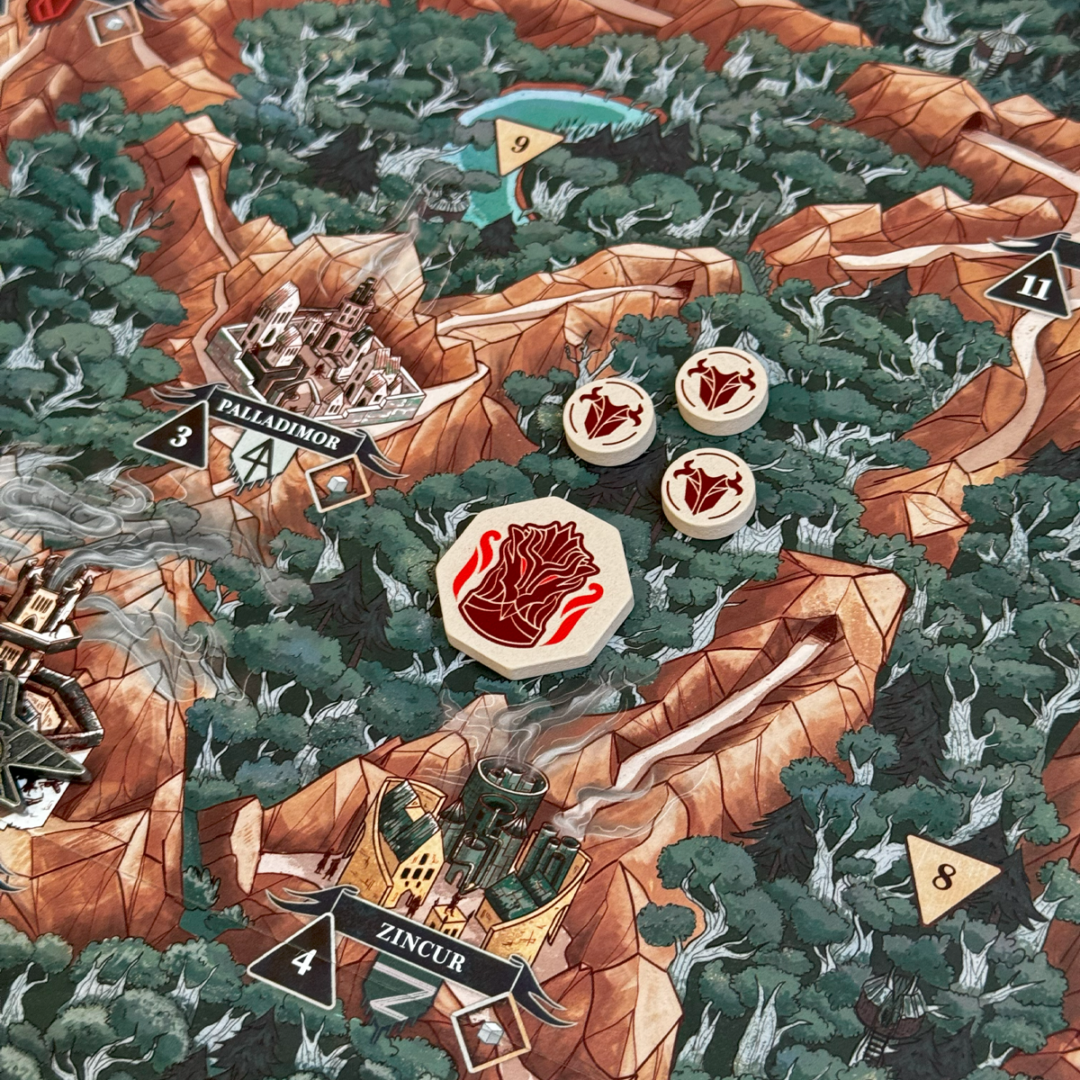
And here we get to a core element of Ironwood: the asymmetry in the game is not just a juxtaposition. It’s not about smashing two interchangeable sides one against the other and seeing what happens. It’s all about unique yet intertwined game plans.
For example, Woodwalkers start from the outer forests and need to get in to retrieve their totems, while Ironclad start strong in the board center but have to establish their forges on the outer mountains. With these crossing movements comes the conflict and its moving fronts. They are also key to generating tension between following your own goals and challenging your opponent’s.
This interconnected asymmetry also appears in the economy system. We’ve touched on the drill interaction already. But the whole Ironclad’s “unfair” income is counterbalanced by their foes’ tendency to sack their capital! In order to construct a forge, the former needs to amass 5 crystals. That’s more than enough for the Woodwalkers to launch a perilous ransack on Ferrum, slow down their enemies’ plans and use the resources for their own ends.
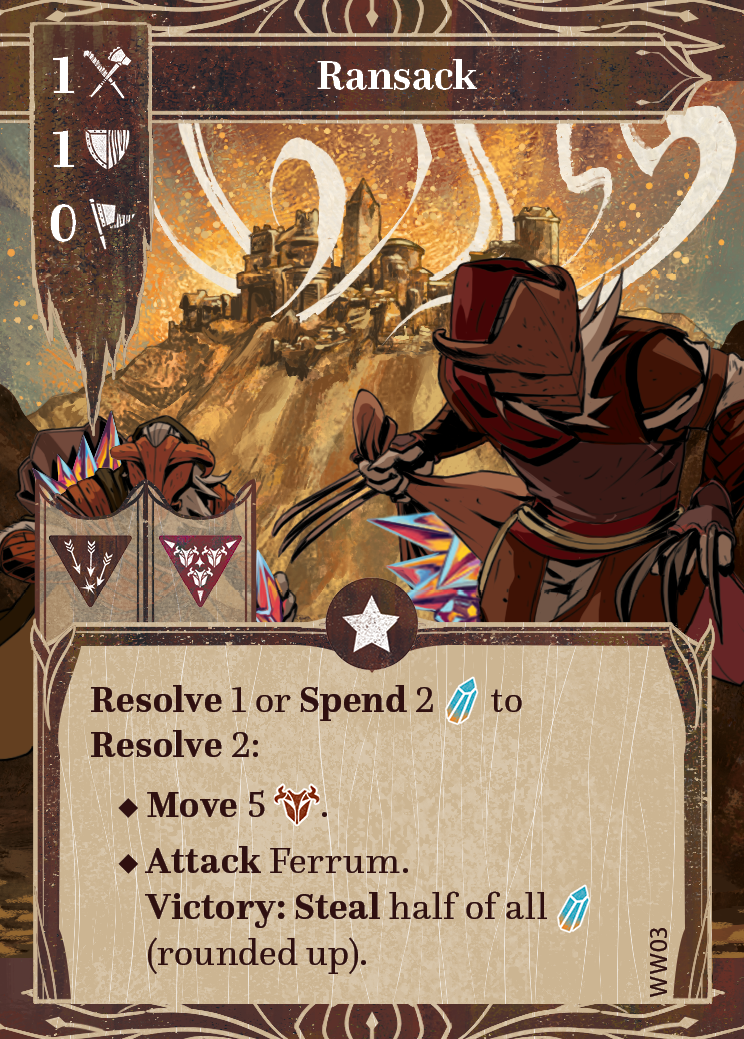
Netrunner players will immediately recognize the Criminal vibes in these timely thefts…
Finally, we couldn’t close the asymmetry topic without highlighting the amazing components Mindclash Games have made for each side. Woodwalkers troops and totems are made of silk-screened wood; Ironclad troops, golems and forges are all metal pieces. This resonance between material and theme is a joy. The studio made Ironwood a sensational object. And personally I’m a big fan of Villő Farkas’ card backs. They are stunning.
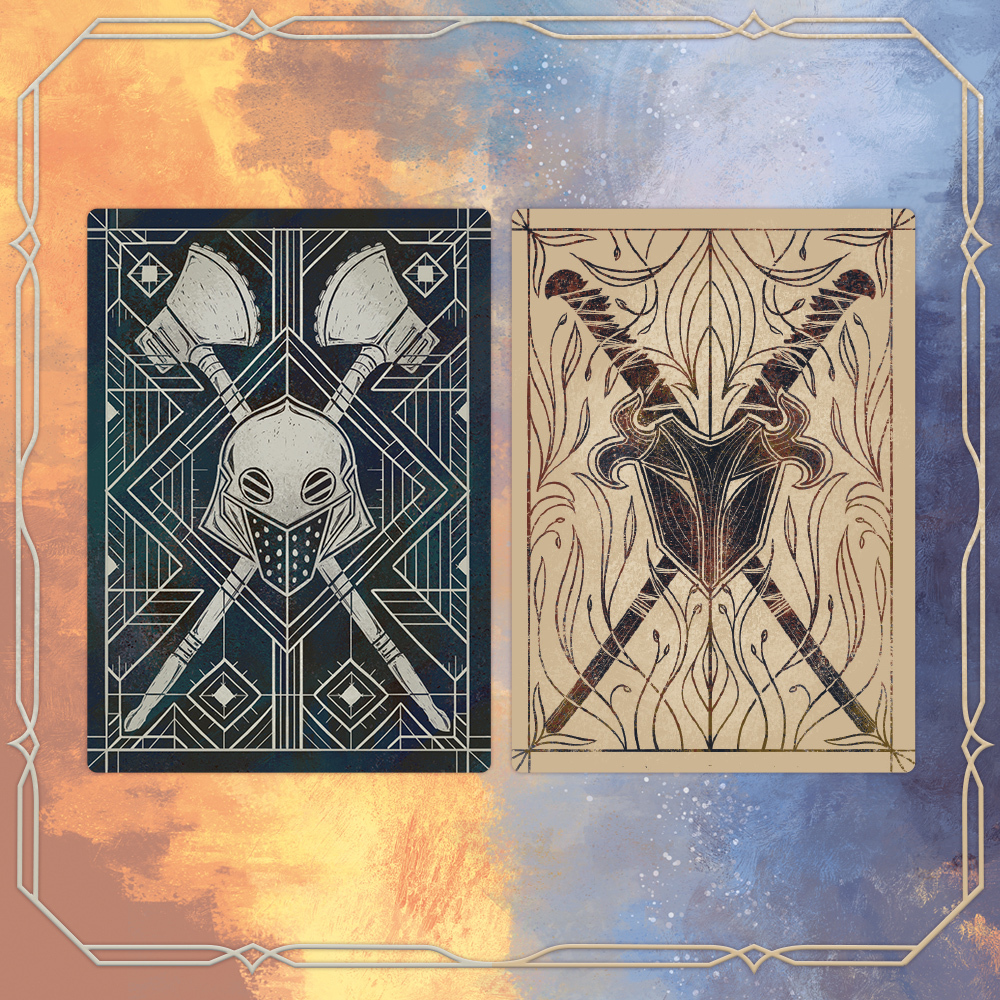
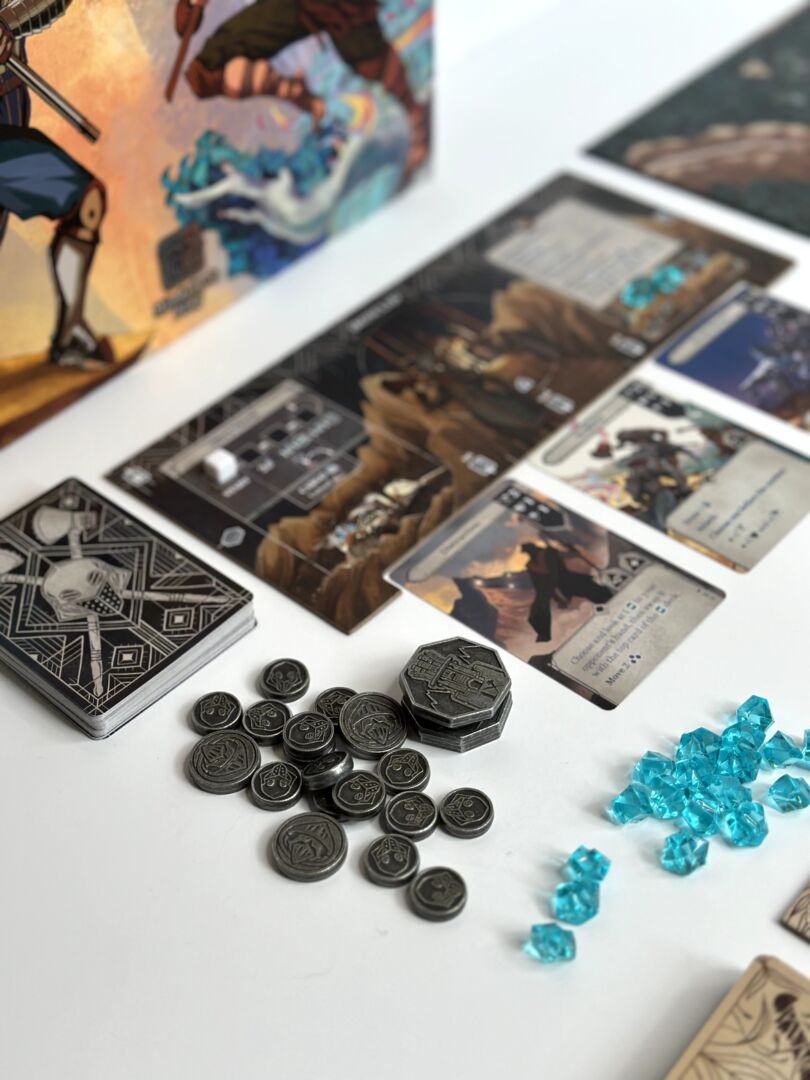

Julien: Now that you know each faction better, let’s get into another cornerstone of the design. About the time I joined Maël, I had played a lot of Star Wars Rebellion, which truly is an amazing game. One thing that immediately struck me in this game is the cards play: instead of giving players a fixed list of actions they can take, everything you do in the game comes from card play. You start the game with base cards that cover all the main actions you need and you draw unique cards with more impactful and surprising effects. At the end of each round, you discard the unique cards you played but you get the base cards back. This means that you always have access to the latter and that playing the former has an opportunity cost.
I found that system fascinating for 3 reasons:
1) It builds up an emerging story. Each card, with its unique art and name, becomes an episode of the great conflict. And the game elevates from that continuous connection between the cards theme and their mechanical effects. This has always been central for Maël and I and Qistina Khalidah’s amazing art turned it into a dream!
2) It drastically reduces the amount of rules you need to learn and remember. As everything is written on these cards, you just follow their text. The iconography MCG’s graphic design team designed made it even smoother.
3) It enriches the experience through ongoing variance. Each game, you are going to see different cards, in different order, in front of different board states. You’ll face new challenges to resolve with the tools you’re given this time. In Ironwood, with more than 30 unique cards in each deck, every turn will ask you new questions.
We wanted to build on Corey Konieczka’s neat system.
The first change we introduced in Ironwood was to turn more intentionally these special cards into a central resource. Just like the Larimor Crystals, cards are a vital tool in your strategy, and deciding when to use them instead of your base cards is a key element of the game. At the start of each round, you’ll draw 2 cards. But during the action phase, you can dedicate time and resources to drawing more. These special cards increase your tactical choices, they are primordial in combat, and various Woodwalkers’ wild effects require you to burn (discard from hand) other cards as a cost.
The second and most important change compared to SW Rebellion was about connecting this hand management element to the battle system.

Julien: In the earliest iterations of the game, Maël and I focused on the core system and actions. We had a very simple dice-based combat resolution that worked as a placeholder but we knew we wanted something more original. Something tied to the rest of the game. Following our “accessible but deep decision making” principle, in a 60-minute long game, we wanted this battle system to be: a) not luck-based; b) not deterministic; c) quick; d) with bluff and emotions; e) and very tactical.
So, how do you design such a combat mechanic focused on choices, with room for surprise, and cunning moves, while still remaining very snappy and smooth? The answer was definitely not obvious and before coming up with a satisfying prototype, I did my homework. I pretty much listened to all the game design podcasts and videos focusing on conflicts, did a lot of research and tried a ton of options. At the end of the day, battle systems that checked all our goals while remaining fast to resolve turned out to be rare. So I rolled back to two gems whose combat resolutions have always impressed me for their elegance and depth.
The first one is Dungeon Twister. I first played this remarkable game 18 years ago! By that time, I was mostly into the gorgeous Confrontation miniatures game (and rpg). Coming from dice rolling and tables-based systems, Dungeon Twister completely caught me by surprise with its fast but thinky, fair but sly combat rules. It’s incredibly simple: both players secretly bet one combat card and add its value to their fighter’s strength to determine the winner. The key element here is that those combat cards are a very limited resource so knowing when to spend them and surprise your opponent is an absolute treat for tacticians.
I really wanted to inject this tension between limited resources and the urge to win your fights in Ironwood. Winning combats can indeed be decisive at certain points of the game. It allows you to decide where the defeated army flees. As the Ironclad, you’ll need to put warbands carrying a totem to flight, for instance, and make sure they don’t retrieve it before it’s too late.
Picking your fight and managing your card resources accordingly is a decisive part of the game.
The second main influence for our battle system is Kemet. How many times have I heard “Why don’t we see such a cool system in other games?”
Similarly to Dungeon Twister, when a battle occurs in Kemet, both players bet a card (from a diminishing pool of 6 options). But the new take here is that these combat cards don’t have one value, but three. They give dominance, damage and defense. Dominance is summed up with the number of troops to decide the winner. Damage, as you’d expect, inflicts casualties, reduced by your opponent’s defense. Everyone who has played Kemet knows how this simple mechanic makes for great tactical choices. Using a similar system in Ironwood felt like the most natural thing. In each combat, you’ll ask yourself: do I need to focus on winning here? Or inflict damage and hinder my opponent’s future plans? Or protect my troops and stay strong on this part of the board?
Moreover, it creates a tense mind game between players. Do you think your opponent will try to win too and you need to put your highest tactic card? Or can you play a card with some extra love (in the form of damage), at the cost of a lower tactic? Is it worth playing a card with only 1 damage, if you think they’ll block it?
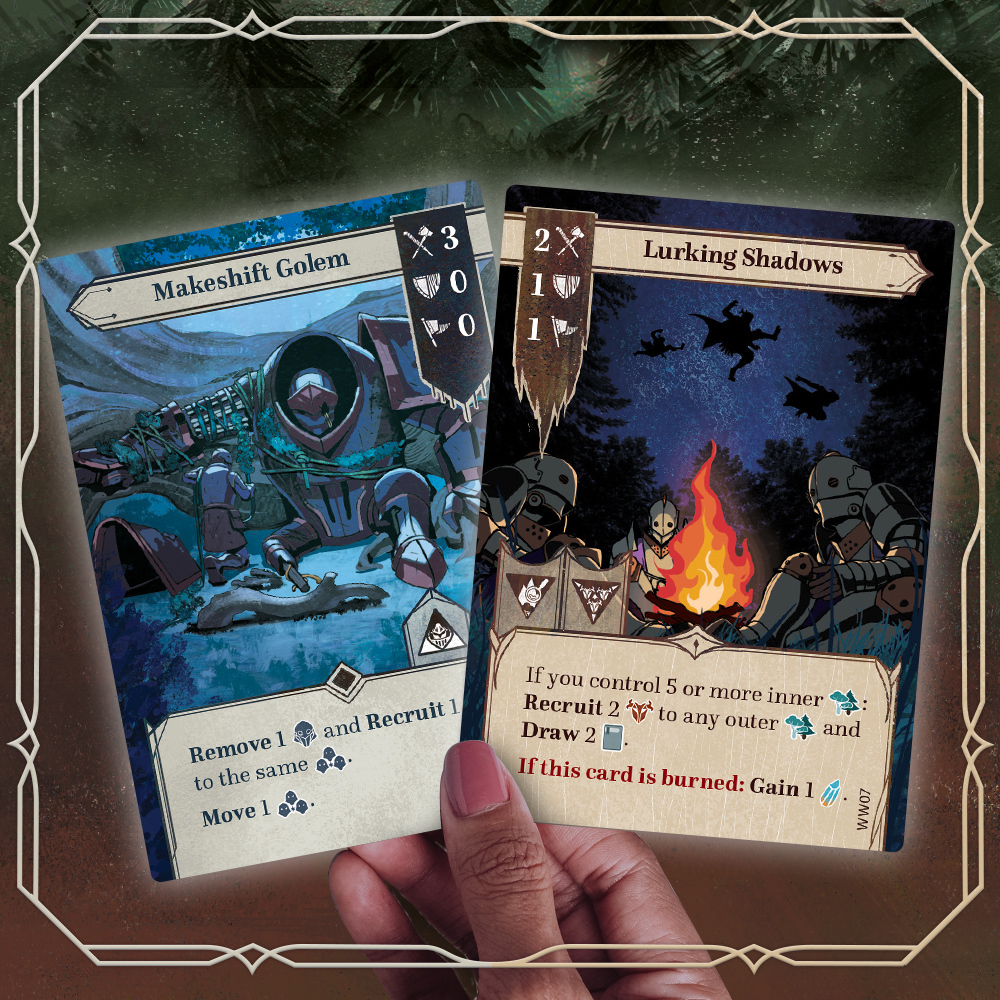
One twist, compared to Kemet’s resolution, comes from the order of effects: in Ironwood, damages come first, then – if players still have troops present! – they compare their dominance by summing up their card value and their troops left. This design choice raises the tension in battle. If your opponent takes too much risk and focuses on dominance, you may take them by surprise and play a powerful damage card to wipe their army before they show their tactical superiority! This elevates the bluff side to another level.
But the main difference is that betting these combat cards is not really a cost in Kemet (which fits well into its own system): each combat, you have less options and thus your opponent has an easier time predicting which card you’ll play next (until you get them back). But you don’t spend them for good.
In Ironwood, on top of choosing your tactical priorities (dominance, damage or defense) and reading your opponent’s, you have an extra layer to consider: should you bet a base card (with lower combat values) or can you afford to one-shot use a special one (with higher numbers)? The combat play of cards works indeed the same way as the action system discussed above: when you bet a card in a battle, you’ll get it back at the end of the round if it were a base card, but special cards are discarded.
This is where Ironwood warps its predecessor’s influences into a new formula full of decisions for you to take. Which cards do you absolutely want to keep and play for their action effects? Which ones are you going to bet in battle? Is this combat worth a special card? Or do you want to keep your options open for the crucial attack you’ll launch next?
Maël and I love multi-use cards and we’re so happy we found a way to organically tie them to the whole mechanics of the game.
I believe we’ve succeeded in creating a battle system that’s both natural and quite unique. Among all the playtesters who helped us all the way, no one ever mentioned Dungeon Twister or Kemet. But Ironwood definitely owes to these two games. So thank you, Christophe Boelinger, Jacques Bariot and Guillaume Montiage!

Julien: Ironwood’s design journey has been quite demanding but incredibly satisfying for Maël and I. We feel very lucky and grateful to have worked with so many talented people at MCG, with the playtesters team and with the card illustrator, Qistina Khalidah.
It’s been wild to receive so much excitement from players after Ironwood’s public debut, at PAX Unplugged. Now, it is time the game hits the tables and more people try it out! We can’t wait to hear about your memorable turns, your takes on “this card’s OP” and maybe see a competitive scene blossom… Thank you for riding with us and get ready for Ironwood!
Don’t forget to follow Ironwood on Gamefound to get notified on May 21 when we launch: https://bit.ly/4bBafTM